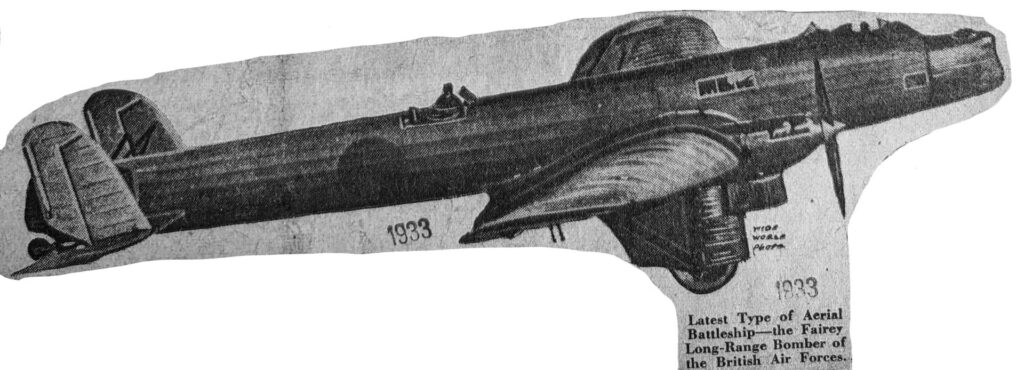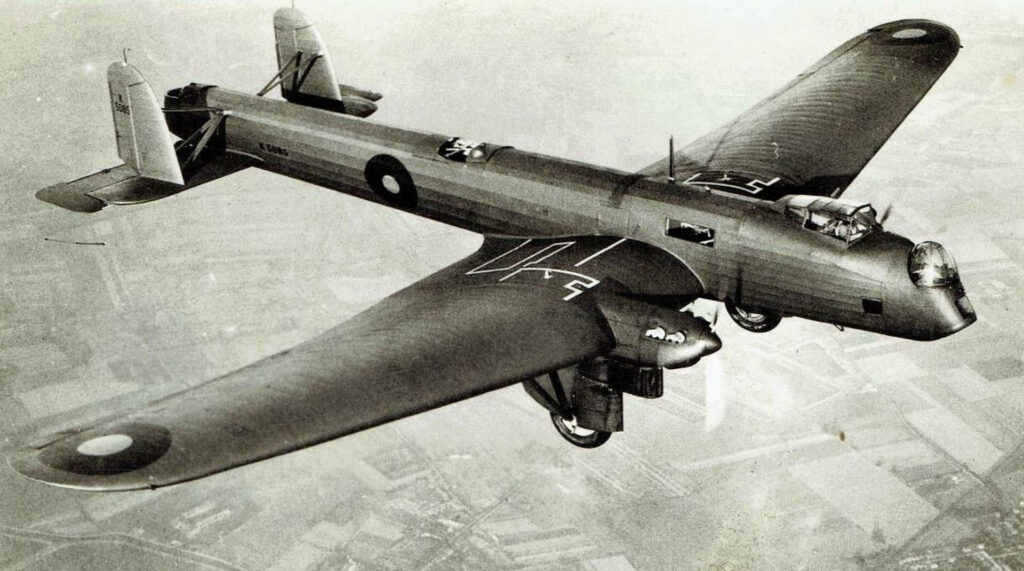Tony’s Scrapbook: Fairey Hendon

The Fairey Hendon was designed in response to an Air Ministry specification for a long-range, all-metal night bomber. It was Fairey’s first monoplane bomber design and one of the first all-metal monoplanes built for the Royal Air Force. The prototype flew in 1930, and the aircraft entered service in the mid-1930s.
The Fairey Hendon was a low-wing monoplane with a distinctive single-engine nacelle. Its fuselage was smooth and streamlined, and its undercarriage was fixed and spatted.
The aircraft was constructed primarily of metal and was advanced for its time compared to the fabric-covered biplanes still in use. It typically carried a crew of four to five, including the pilot, co-pilot, bombardier, navigator, and radio operator/gunner.
Powered by two Rolls-Royce Kestrel V engines, each producing around 600 horsepower, the maximum speed of the Fairey Hendon was approximately 142 mph (229 km/h). It had an operational range of about 920 miles (1,480 km).
The bomber was equipped with defensive machine guns and could carry a bomb load of up to 2,000 pounds (907 kg).
The Fairey Hendon was used primarily as a night bomber by the Royal Air Force. However, it was not widely produced, as more advanced bombers quickly superseded it. By the time it entered service, the bomber was already considered obsolete due to the rapid advancements in aircraft technology.
Despite its limited operational history, the Fairey Hendon was essential in developing all-metal, monoplane bombers. Its design and construction techniques, such as the use of metal and the monoplane configuration, were pioneering and influenced later bomber designs during World War II, setting the stage for the more advanced aircraft dominating the skies.
The Fairey Hendon was among the first of a new generation of bombers that moved away from biplane designs and embraced the monoplane configuration. The monoplane design set the stage for the more advanced aircraft dominating the skies during World War II.
Why do you think the Fairey Hendon failed? Let’s look into this question because I was wondering the same thing.
Newer aircraft like the Armstrong Whitworth Whitley, Vickers Wellington, and Handley Page Hampden were superior in almost every aspect, including speed, range, bomb load, and defensive armament. These aircraft were designed based on the lessons from earlier bombers like the Hendon. They incorporated more advanced aerodynamics, better engines, and improved structural designs, all of which were influenced by Hendon’s design and performance.
The Hendon’s fixed undercarriage increased drag, reducing its speed and range compared to aircraft with retractable landing gear. By the mid-1930s, most new bombers had retractable gear, which provided significant performance benefits.
The Fairey Hendon’s top speed was only about 142 mph (229 km/h), which was relatively slow even by the standards of the early 1930s. This limited speed made it vulnerable to interception by enemy fighters and less effective as a bomber.
The Hendon’s bomb load was modest compared to newer bombers. As the need for larger bomb loads became apparent with the evolving tactics of strategic bombing, the Hendon’s capabilities were quickly deemed insufficient.
Only a tiny number (about 15) of Hendons were produced, limiting their operational impact. The Royal Air Force primarily used these for training and experimentation rather than frontline service. This limited production also meant that the Hendon’s potential was not fully realized, despite its influence on later bomber designs.
By the late 1930s, RAF doctrine was increasingly focused on night bombing to avoid the growing threat from enemy fighters and anti-aircraft defenses. The Fairey Hendon, designed initially for long-range day bombing, was not particularly suited to night operations compared to newer designs.
The bombers that replaced the Hendon, like the Wellington and Lancaster, were designed with versatility in mind. They were capable of performing a wide range of missions beyond simple bombing, but the Hendon’s design lacked this adaptability.
Short and simple, see you in the next one!
Discover more from Buffalo Air-Park
Subscribe to get the latest posts sent to your email.




